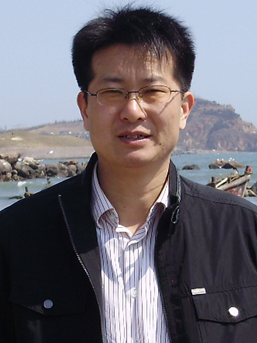
Li Wei 李伟
Associate Professor
Ph.D. Ecology
Email: liwei01@ouc.edu.cn
Add.: Ocean University of China, Yushan Campus, Scientific Building, 5 Yushan Road, 266003, Qingdao, P.R.C.
Research Interests
My research mainly focusses on 1) fungal taxonomy and resource on the basis of phylogenetic and morphological analyses; 2) Microbial molecular ecology and macroecology using metabarcoding, meta-genomics/transcriptomics/bolomics approaches, as well as high-throughput culturing; 3) The ecological functions performed by fungal communities in various marine environments including coastal and deep-sea ecosystems, which can be hijacked and used for biotechnological applications.、
Academic Qualifications
1995-1999: B.Sc. Plant Protection, Shandong Agricultural University
1999-2002: M.Sc. Entomology, Shandong Agricultural University
2002-2005: Ph.D. Ecology, Institute of Zoology, Chinese Academy of Sciences
2008-2011: PostDoc, Fungal Taxonomy, Shandong Agricultural University
Working Experience
2011-current: Associate Professor, College of Marine Life Sciences, Ocean University of China
2005-2011: Lecturer, College of Marine Life Sciences, Ocean University of China
2014-2015: Visiting Scholar, University of Ottawa, Canada
Representative Publications
1. Wang MM, MA YY, Cai L, Tedersoo L, Bahram M, Burgaud G, Long XD, Zhang SM, Li W*. (2021). Seasonal dynamics of mycoplankton in the Yellow Sea reflect the combined effect of riverine inputs and hydrographic conditions. Molecular Ecology, doi:10.1111/mec.15986.
2. Burgaud G, Edgcomb VP, Hassett BT, Kumar A, Li W, Mara P, Peng X, Philippe A, Phule P, Prado S, Quéméner M, Roullier C. (2021). Marine fungi. In The Marine Microbiome vol. 2. Springer, in press.
3. Huang RH, Lin W, Zhang P, Liu JY, Wang D, Li YQ, Wang XQ, Zhang CS, Li W*, Zhao DL*. (2020). Anti-phytopathogenic bacterial metabolites from the seaweed-derived fungus Aspergillus sp. D40. Frontiers in Marine Science, doi:10.3389/fmars.2020.00313.
4. Wang MM, Ma YY, Feng CH, Cai L, Li W*. (2020). Diversity of pelagic and benthic bacterial assemblages in the Western Pacific Ocean. Frontiers in Microbiology, doi:10.3389/fmicb.2020.01730.
5. Li W, Mengmeng Wang, Gaëtan Burgaud, Huaming Yu & Lei Cai*. (2019) Fungal community composition and potential depth-related driving factors impacting distribution pattern and trophic modes from epi- to abyssopelagic zones of the Western Pacific Ocean. Microbial Ecology, https://doi.org/10.1007/s00248-019-01374-y.
6. Li W*, Wang MM, Pan HQ, Burgaud G, Liang SK, Guo JJ, … Cai L*. (2018). Highlighting patterns of fungal diversity and composition shaped by ocean current using the East China Sea as a model. Molecular Ecology, doi:10.111/mec.14440.
7. Li ZX, XF Wang, GW Ren, XL Yuan, N Deng, GX Ji, W Li*, P Zhang*. (2018) Prenylated diphenyl ethers from the marine algal-derived endophytic fungus Aspergillus tennesseensis. Molecules, doi: 10.3390/molecules23092368.
8. Wang MM, Shenoy BM, Li W*, Cai L*. (2017) Molecular phylogen of Neodevriesia, with two new species and several new combinations. Mycologia, doi: 10.1080/00275514.2017.1415075.
9. Li W*, Wang MM, Bian XM, Guo JJ, Cai L*. (2016). A high-level fungal diversity in the intertidal sediment of Chinese seas presents the spatial variation of community composition. Frontiers in Microbiology, 7(5995):2098. doi: 10.3389/fmicb.2016.02098.
10. Li W*, Wang MM, Wang XG, Cheng XL, Guo JJ, Bian XM, Cai L*. (2016). Fungal communities in sediments of subtropical Chinese seas as estimated by DNA metabarcoding. Scientific Reports, 6, 26528. doi: 10.1038/srep26528.


